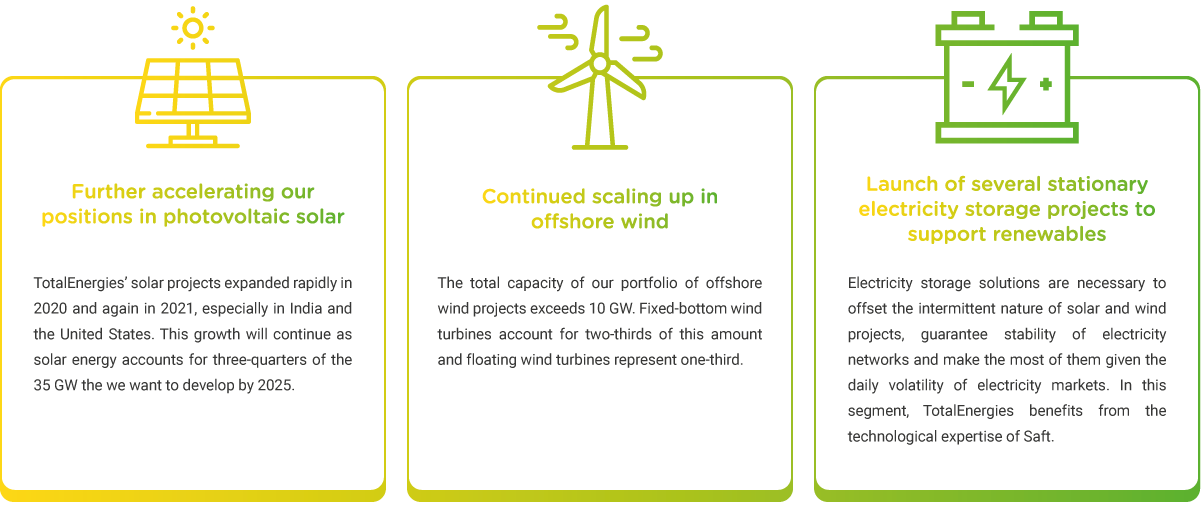Renewables

TotalEnergies is deploying its goal to rank among the top five global producers of solar- and wind-generated electricity by 2030 across the entire renewable electricity value chain (production, storage, trading and sales).
The energy transition is partly based on the electrification of energy uses, which requires a massive increase in the supply of green electrons. Our contribution to the development of renewable energies, as called for in the Net Zero Emissions scenario*, accelerated in 2021. Our investments in renewables and electricity accounted for 25% of total investments, which is more than the 20% we forecast a year ago. Combined with our investments in new molecules, this means that soon more than 30% of our investments will be devoted to decarbonized energy.
*The International Energy Agency’s (IEA) Net Zero Emissions (NZE) Scenario is a “normative” scenario that describes a changing world energy demand that would be consistent with limiting the global temperature rise to 1.5°C “without overshooting the related carbon budget”.

Renewable electricty installed capacity by TotalEnergies
The objective is to have 35 GW of gross capacity in 2025 and 100 GW in 2030. The 2025 figure is based on identified projects in development. The goal is to reach 35 GW of gross capacity in 2025, then 100 GW in 2030 and thus increase our electricity production from 21 TWh in 2021 to 120 TWh in 2030.

Since 2015, TotalEnergies has been building a portfolio of flexible power generation using combined-cycle gas turbine (CCGT) plants, with a capacity of 4 GW at the end of 2021.
These plants complement the development of renewables by supporting the grid during periods of peak demand or when there is not enough sunshine or wind. Another advantage of gas-fired power plants is greater operational flexibility. They can be restarted and ramped up twice as fast as coal-fired plants. Plus, the ability of natural gas to generate power flexibly also makes it a vital partner of renewables, which are intermittent by nature. Ultimately, the CCGT units are intended to be carbon-free, either by changing from gas to biomethane or hydrogen or by sequestering their emissions through carbon capture and storage (CCS).
Our actions for the future


